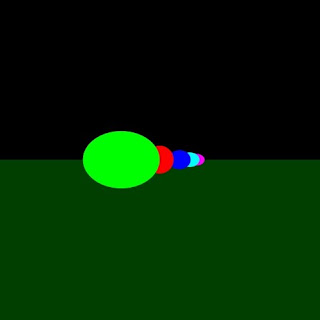One of the features that good old BMRT(R.I.P.) used to have was a default progressive refinement interactive display. I always thought that this is a very useful display method (specially for lighting) as it allows the user judge the final image as it is refining. No need to render the whole image when you know the modification to the lights you just made is way off!
I decided to try and replicate suck interactive display. It proved to be a neat little exercise. I'm sure there are ways to improve this algorithm but for now I must move over to implementing the camera class and hopefully soon enough the shading portion.
In the mean time I leave you all with this little video. Cheers
Progressive Interactive Display
(the video looks like crap, ill try to improve the quality later)







